Cleantech Chronicles Part 4 – ENERGY EDITION
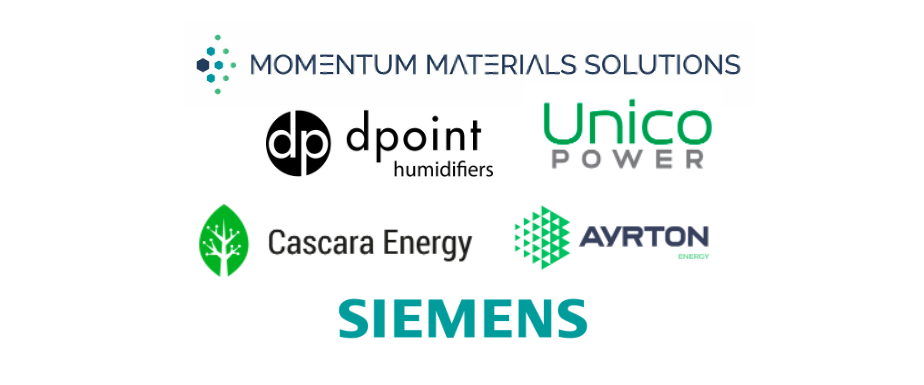
The global landscape of clean energy and hydrogen technologies is evolving rapidly, driven by an urgent need to address climate change and reduce carbon emissions. Over the past decade, we have witnessed remarkable advancements in renewable energy sources such as solar, wind, and hydropower. These technologies have not only become more efficient but also more economically viable, with costs dropping significantly. Hydrogen, too, has emerged as a key player in the clean energy revolution, offering a versatile solution for decarbonizing sectors that are challenging to electrify, such as heavy industry and long-haul transportation.
As the world accelerates its transition to clean energy and hydrogen technologies, nations like Germany, Japan, South Korea, and China are leading the charge with inspiring achievements. The recent 17% global boost in clean energy investment signals a promising trend, yet it falls short of what’s needed to meet our ambitious net-zero targets. Albert Cheung of BloombergNEF warns that there needs to be an 170% increase in investment to be on track to meet net zero goals – and policymakers are crucial in making this happen. This level of investment is crucial to scaling up renewable technologies, accelerating research and development, and deploying clean energy solutions on a global scale.
While Canada has made strides in promoting clean energy, its level of investment in renewable energy and hydrogen technologies is not as high as in some leading countries. For instance, nations like Germany and China have aggressively increased their investments in renewable energy infrastructure and research. In contrast, Canada’s investment in clean energy technologies has been more modest. Furthermore, Canada’s policy framework has been inconsistent, with varying levels of commitment and support across different provinces and federal administrations. This lack of a cohesive, long-term strategy can create uncertainty and deter significant investment. Beyond investment, Canada has also fallen behind other countries in key areas like hydrogen infrastructure development, grid modernization and energy storage, and decarbonization of heavy industries.
To address these gaps, Canada needs a more cohesive and aggressive strategy that includes increased investment in clean technologies, accelerated infrastructure development, and comprehensive policies that support all facets of the energy transition.
Here are a few good sources to dive deeper into the global and Canadian state of clean energy and the energy transition to net zero:
This week’s article represents part 4 of 5 in our 2025 Clean50 cleantech nominee features, and we shine a light on six exceptional innovators who are shaping the future of clean energy and hydrogen technologies. As we continue to navigate the complexities of the energy landscape, these companies exemplify the ingenuity and dedication needed to drive meaningful progress in clean energy and hydrogen technologies. Join us in celebrating their solutions and show your support for clean energy initiatives – personal lifestyle changes can collectively drive demand and influence decision-makers!
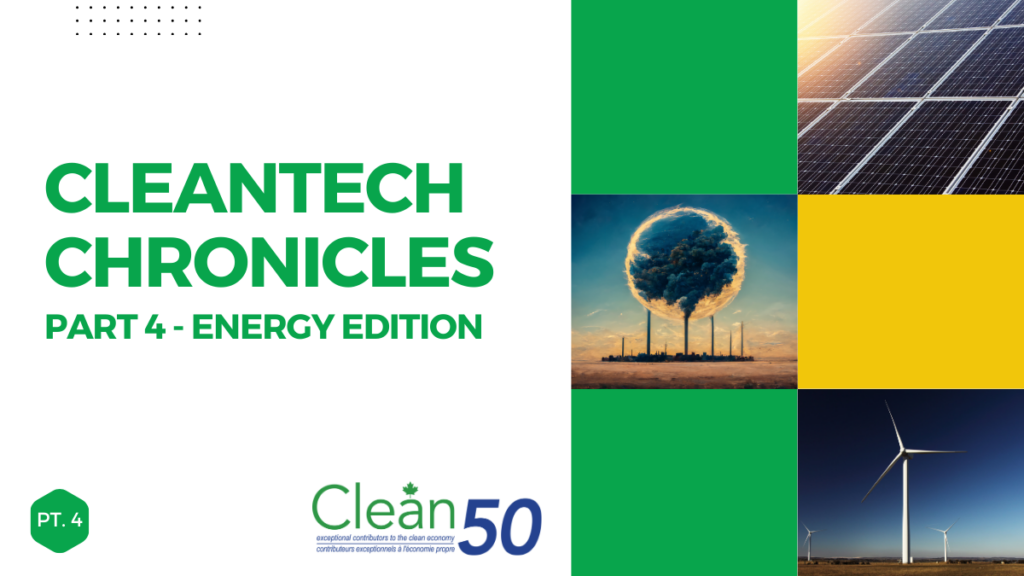
.
Company Profiles 1-6: ENERGY SOLUTIONS
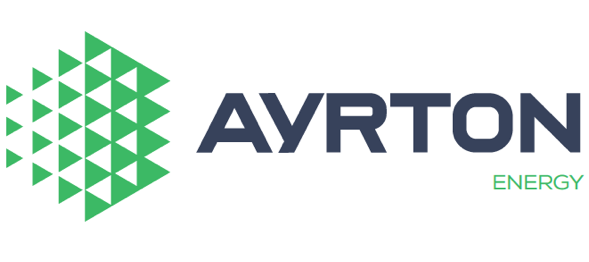
The hydrogen hype: How Ayrton is driving broad adoption for distributed hydrogen use
Ayrton Energy, Brandy Kinkead (CTO & Co-founder) (www.ayrtonenergy.com)

Company and product snapshot: At present, hydrogen storage is expensive, dangerous, and logistically difficult owing to the small size, flammability, and reactivity of hydrogen. Ayrton’s Liquid Organic Hydrogen Carrier (LOHC) storage technology marks a paradigm shift in the domain of large-scale hydrogen transportation, rendering the use of hydrogen as commonplace as diesel or gasoline. This innovation addresses the challenges of traditional hydrogen transport, mitigating issues like hydrogen loss and pipeline corrosion. Ayrton’s novel method of storing hydrogen in a dense, organic liquid amplifies manageability and transportability, enabling the use of existing oil and gas infrastructure, with a practical and efficient energy solution. Furthermore, the safety of the solution will enable hydrogen adoption with low risk, even in highly populated areas.
Who will be able to use it: Ayrton’s technology will help drive broad adoption for distributed hydrogen use, such as energy storage and backup energy generation for utilities, commercial sites, hospitals, data centers, and remote work sites. Their system also reduces the cost of hydrogen refuelling infrastructure to help increase hydrogen use for heavy duty vehicles.
Market readiness expected by: Ayrton’s system is anticipated to be fully commercial in 2027 with the completion of key demonstration projects and the development of a manufacturing plan for scaled deployment.
.
..
. .

Cool moves: How Cascara’s heat recycling is shaking up city energy
Cascara Energy, Robert Croghan (CEO & Founder) (www.cascaraenergy.com)
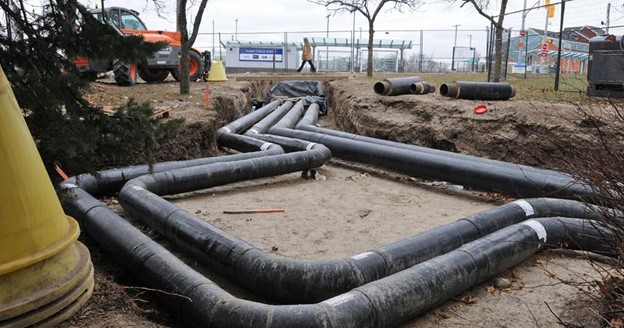
Company and product snapshot: Cascara Energy is a heat recycling company devoted to transforming urban energy use and recycling waste heat, while drastically cutting costs and emissions in doing so! Cascara’s heat recovery technology, named the R744 Thermal Network, is an innovation for District Heating & Cooling (R744 based 5GDHC). Cascara was selected as a finalist in the Transit Tech Lab to demonstrate how their technology may be able to cool New York City Metropolitan Transportation Authority (MTA) subway stations. Cascara has proposed to study the feasibility of extracting excess heat from station platforms, providing energy-efficient cooling while simultaneously repurposing the captured heat to offset natural gas usage for hot water in nearby buildings. This dual-purpose approach demonstrates Cascara’s commitment to maximizing energy efficiency and reducing urban carbon footprints. The project highlights Cascara’s leadership in developing sustainable, integrated urban infrastructure solutions that address multiple environmental challenges simultaneously.
Who should buy it: Facilities seeking to make quantifiable and significant changes to improve ESG, operational costs, and sustainability in multi-residential buildings, data centres, industrial processes, and existing district energy schemes. Building owners and cities can expect to see a 30-50% reduction in heating and cooling costs while also achieving substantial GHG emissions reduction.
.
.
.
.

The CORE solution for successful hydrogen fuel cell systems
CORE Energy Recovery Solutions dPoint Humidifiers, Ryan Huizing (Director of Research & Development) (http://dpoint.ca)
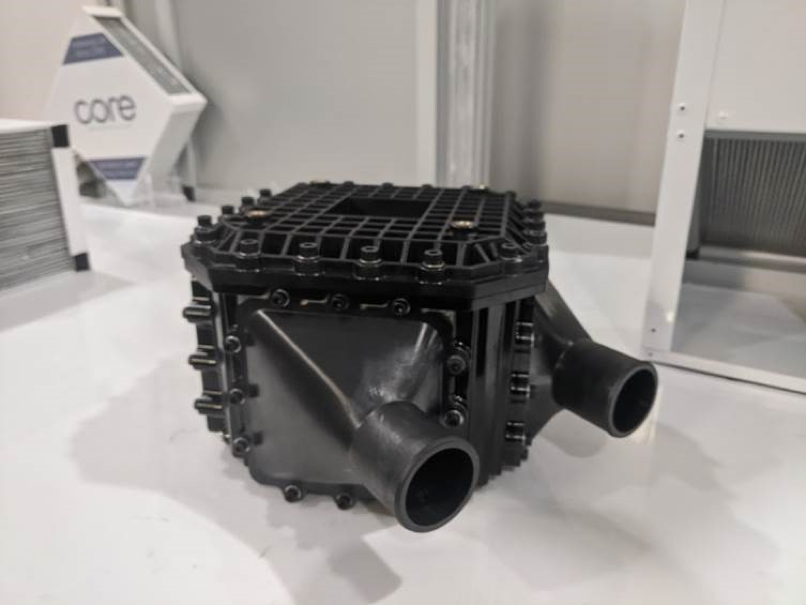
Company and product snapshot: Hydrogen fuel cell electric vehicles (FCEVs) have the potential to offer zero emissions vehicle technology with long range and high uptime. ‘dPoint Humidifiers’ made by CORE Energy Recovery Solutions, based in Vancouver, are an enabling technology for fuel cell systems. dPoint humidifiers improve the system performance, durability, lifetime, and are a critical component in many FCEVs. The humidifier uses a specialized membrane to passively recycle water, transporting it from the exhaust to the supply of the system where it is required. Over the last several years the dPoint Humidifiers team has run programs with several major passenger automotive OEMs, scaled component manufacture for material handling (forklift) applications shipping over 50,000 components, and developed prototype components for the on-road truck, marine, and aerospace industries. Recently they have fielded humidifiers used in tens of thousands of operational fuel cell systems allowing CORE to truly validate the technology, generating hundreds of millions of operational hours in our customer’s systems, and helping ensure that the next generation of zero-emissions FCEVs are efficient and robust.
Who should buy it: Engineers and developers of hydrogen fuel cell systems, or those developing other systems that require heat and humidity transport between gas streams.
.
.
.

Progress towards electric heavy-duty trucks is gaining momentum
Momentum Materials Solutions Corp. Arlene Ai (CEO & Co-founder) (www.momentummaterials.com)
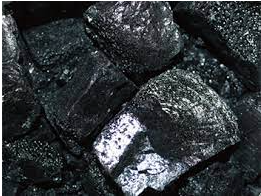
Company and product snapshot: Based in Calgary, Momentum Materials is developing advanced ordered-structured carbon materials to enhance the stability and performance of the membrane electrode assembly (MEA), ensuring high efficiency and a long lifespan for end-users. Currently at TRL 5, the MEA is a critical component of a hydrogen fuel cell stack (PEM fuel cell) that generates electricity through electrochemical reactions between hydrogen and oxygen from the air. Heavy-duty trucks emitted approximately 1.2 Gt of CO2 in 2022. When Momentum Materials’ products are applied in fuel cell stacks to power electric trucks globally, they will contribute to and align with the Net Zero Emissions by 2050 scenario that emissions must fall by 15% from 2022 to 2030.
Who will be able to use it: Hydrogen fuel cell stack manufacturers or fuel cell vehicle manufacturers.
Market readiness expected by: 2025
.
.
.
. .

.
Microgrids for macro impact!
Siemens Canada Ltd., Faisal Kazi (President & CEO) (www.siemens.com)
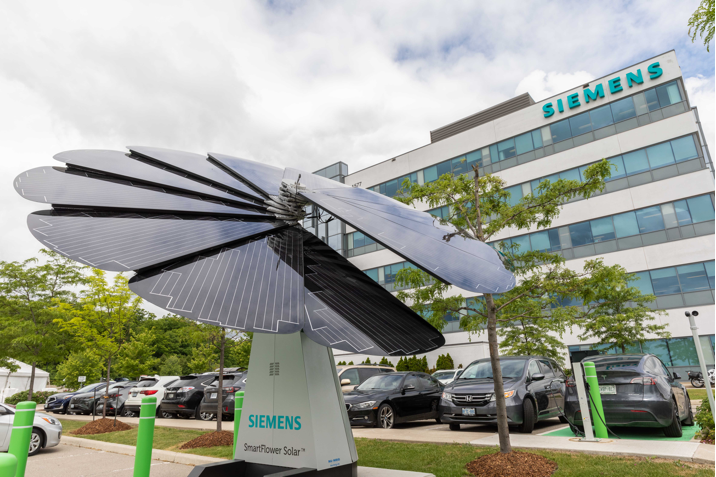
Company and product snapshot: Siemens Canada is a technology company with approximately 4,200 employees in Canada delivering solutions for sustainable energy, intelligent infrastructure, healthcare and manufacturing. Siemens Microgrid Controllers enable sustainable energy production, distribution and education. The offering aims to inspire and empower future generations by integrating microgrids, battery storage, and sustainable energy sources into classrooms and beyond. Using sustainable energy sources like photovoltaic, wind, hydro, or biomass, the Siemens SICAM A8000 Microgrid controller ensures clean energy distribution. Microgrids can be used in urban settings, isolated communities, and anywhere that needs a reliable and efficient power source to solve the problem of energy inefficiency and lack of reliability. They provide increased energy efficiency, resilience against power outages, and support sustainability by integrating renewable energy sources.
Who should buy it: Microgrids are useful for campuses, small communities, critical facilities, military institutions, commercial and industrial buildings, remote communities, and even islands without a connection to the main power grid. The Net Zero Classroom offering was developed for higher education institutes and high schools to educate, inspire, and empower future generations through a hands-on learning experience. Allowing students to monitor real-time energy production and consumption, covering topics from decarbonization to smart grids.
.
. .

Power Play for Canada! Unico’s smart and transparent solutions to EV charging in multi-unit buildings
Unico Power, Glen Gordon (CEO) (https://www.unicopower.com/)

Company and product snapshot: Unico Power is an innovative energy management company specializing in optimizing electrical power usage. The energy landscape is evolving rapidly, driven by two major trends. First, electricity supply is shifting to renewable sources like solar and wind, which, while cleaner, can be unpredictable. Traditionally, utilities could respond to increased demand by boosting supply, but with renewable energy, supply is more fixed, and demand needs to be more adaptable. At the same time, new high-power demands, such as electric vehicles (EVs) and heat pumps, are pushing peak demand higher than overall energy consumption. Unico Power’s Cerebro Energy Management System (EMS) is designed to meet these challenges by automatically controlling building-level demand. It prioritizes power usage, adjusting lower-priority devices during peak times and resuming normal operation when demand decreases. Deployed in over 140 multi-unit residential and commercial buildings, the system manages power distribution for more than 2,000 Level 2 EV chargers. Unico Power’s new Listo EMS offers similar smart energy management for homes and townhomes, allowing for seamless integration of EVs, heat pumps, solar, and more without electrical upgrades.
Who should buy it: Condo buildings, commercial buildings, and homeowners with limited electrical capacity who want to add EVs, heat pumps, solar, or other electric technologies without upgrading their electrical service.
.
.














